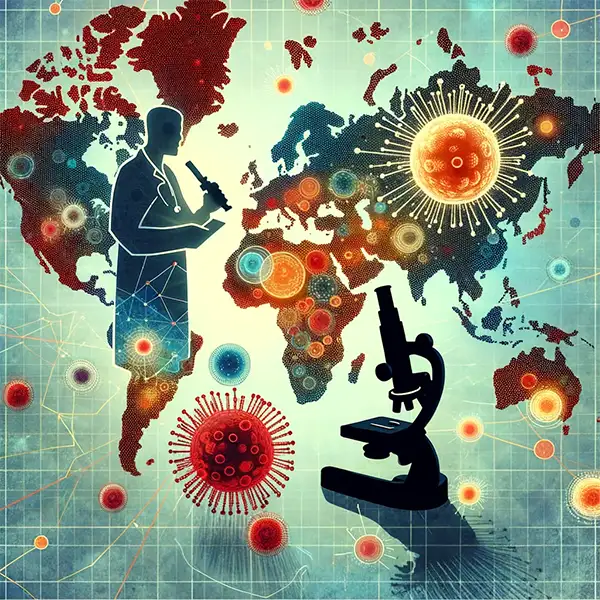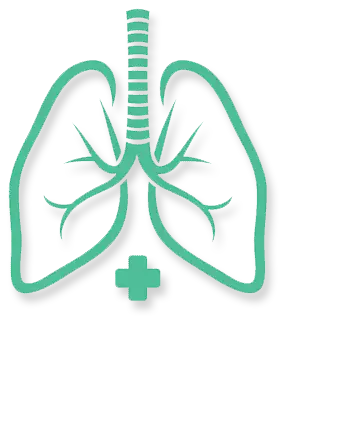Raising Awareness and Fighting a Global Epidemic
Every year on March 24th, the world unites to observe World Tuberculosis (TB) Day, a critical opportunity to raise awareness about the devastating health, social, and economic impacts of this infectious disease. This day commemorates the discovery of the TB-causing bacterium Mycobacterium tuberculosis by Dr. Robert Koch on March 24, 1882. With his groundbreaking discovery, Koch paved the way for the diagnosis and treatment of TB, saving countless lives.
What is Tuberculosis?
Tuberculosis is a potentially serious infectious disease that primarily affects the lungs but can impact other parts of the body, such as the brain, kidneys, and spine. It is caused by the bacterium Mycobacterium tuberculosis and is transmitted through airborne particles when an infected person coughs, sneezes or speaks. This makes TB highly contagious in crowded or poorly ventilated spaces, posing a significant public health challenge in many parts of the world.
TB can manifest in two forms: active TB, where individuals exhibit symptoms and can spread the disease, and latent TB, where the bacteria remain dormant in the body without causing symptoms or being infectious. Without proper treatment, active TB can lead to severe complications or death, especially in individuals with weakened immune systems.
Despite advances in medicine, TB remains a global health threat, particularly in low-income regions where access to healthcare is limited. Addressing the stigma associated with TB and ensuring timely diagnosis and treatment are essential steps toward reducing its impact and preventing further spread.
 Key Facts About Tuberculosis
Key Facts About Tuberculosis
Tuberculosis is more than just a health issue; it’s a global crisis that demands attention. Understanding the facts behind this disease sheds light on its profound impact and highlights the urgency of addressing it. These key statistics and insights underline the scale of the problem and the need for action:
- Global Impact: TB is one of the top 10 causes of death worldwide and the leading cause of death from a single infectious agent, surpassing HIV/AIDS.
- High Incidence: In 2021, approximately 10.6 million people fell ill with TB, and 1.6 million people lost their lives to the disease.
- Latent TB Infection: An estimated one-quarter of the world’s population is infected with latent TB, meaning they carry the bacteria but show no symptoms and are not contagious.
- Drug-Resistant TB: Multidrug-resistant TB (MDR-TB) poses a significant challenge to treatment, requiring more prolonged and complex therapies.
Why is World Tuberculosis Day Important?
World TB Day serves as a reminder that despite significant progress, the fight against TB is far from over. This day highlights:
- The Need for Awareness: Many people are unaware of TB’s symptoms, risk factors, and treatment options, leading to delayed diagnoses and increased transmission.
- Inequalities in Health Care: TB disproportionately affects vulnerable populations, including those in poverty, people living with HIV, and marginalized communities.
- Research and Innovation: Continued investment in research is essential for developing better diagnostic tools, vaccines, and treatments to combat TB effectively.
- Global Cooperation: Eliminating TB requires a coordinated international effort involving governments, health organizations, and individuals.
Signs and Symptoms of Tuberculosis
Understanding TB’s symptoms is crucial for early detection and treatment. Common symptoms include:
- Persistent cough lasting three weeks or more
- Coughing up blood or mucus
- Chest pain
- Fatigue and weakness
- Unintentional weight loss
- Night sweats
- Fever and chills
Diagnosis and Treatment
Diagnosing TB involves a combination of tests, including chest X-rays, sputum tests, and skin or blood tests. Advances in technology, such as rapid molecular tests, have improved diagnostic accuracy and speed.
Treatment for TB typically involves a six-month course of antibiotics. However, drug-resistant strains of TB require more prolonged and complex regimens. Adherence to treatment is vital to prevent the development of resistance and ensure a full recovery.
The Fight Against Drug-Resistant TB
One of the most significant challenges in the fight against TB is the rise of drug-resistant strains. MDR-TB and extensively drug-resistant TB (XDR-TB) are caused by improper use or incomplete treatment of antibiotics. Addressing this issue requires:
- Improved diagnostic capabilities to detect drug-resistant strains
- Ensuring patient adherence to treatment through education and support
- Investment in the development of new drugs and treatment regimens
The Bacillus Calmette-Guérin (BCG) vaccine, introduced in 1921, remains the only licensed vaccine against TB. While it offers protection against severe forms of TB in children, it is less effective in preventing pulmonary TB in adults. Research is underway to develop more effective vaccines to curb the spread of TB globally.
How You Can Help on World Tuberculosis Day
World Tuberculosis Day is not only about awareness but also about action. Every individual has a role to play in the fight against this disease. Whether it’s through education, advocacy, or direct support, small efforts can collectively make a big difference in the battle to end TB.
- Spread Awareness: Share information about TB on social media or with friends and family to educate others about the disease.
- Support Organizations: Donate to or volunteer with organizations working to combat TB, such as the World Health Organization (WHO) or Stop TB Partnership.
- Advocate for Health Equity: Encourage policymakers to prioritize TB prevention and treatment programs, especially in underserved communities.
- Participate in Events: Join or organize events, webinars, or campaigns to highlight TB’s impact and the need for global action.
A Global Commitment to End TB
The United Nations’ Sustainable Development Goals (SDGs) include a target to end the TB epidemic by 2030. Achieving this ambitious goal requires global solidarity and coordinated action on multiple fronts:
- Increased Funding: Adequate and sustained financial support is essential to scale up TB prevention, diagnosis, and treatment programs. Governments, private sectors, and international donors must prioritize funding for TB-related initiatives.
- Innovative Research: Investment in research is critical for developing next-generation diagnostics, vaccines, and treatment options. Breakthroughs in these areas could significantly reduce TB incidence and mortality.
- Strengthening Health Systems: Building robust health systems that provide accessible, high-quality care is fundamental to ending TB. This includes training healthcare workers, expanding laboratory capacity, and ensuring uninterrupted supply chains for medications.
- Addressing Social Determinants: Tackling poverty, malnutrition, and poor living conditions is vital, as these factors contribute significantly to TB vulnerability. Social protection programs can help mitigate these risks.
- Engaging Communities: Local communities play a pivotal role in TB control efforts. Empowering individuals with education and resources fosters early detection, adherence to treatment, and reduced stigma around the disease.
The World Health Organization’s End TB Strategy provides a comprehensive framework to guide these efforts. It emphasizes universal health coverage, patient-centered care, and multisectoral approaches to tackle the epidemic.
World Tuberculosis Day is more than a date on the calendar; it’s a call to action. By understanding the challenges, supporting ongoing efforts, and advocating for change, we can work together to eradicate TB and create a healthier, more equitable world. Let’s honor the legacy of Dr. Robert Koch by committing to a future free from tuberculosis.
Please Share our Content






 Key Facts About Tuberculosis
Key Facts About Tuberculosis








 "Sláinte!" is a traditional Irish expression used as a toast, equivalent to "Cheers!" in English.
"Sláinte!" is a traditional Irish expression used as a toast, equivalent to "Cheers!" in English.